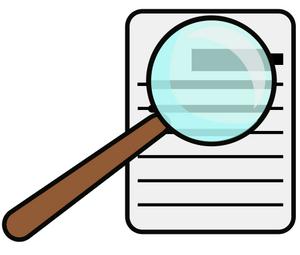According to the Criminal Code, forgery of documents means the production of forged documentation through the falsification of documents (selection or manufacture of components: a form, information carrier, signatures, text, stamps, seals). The falsification of their individual elements also refers to this concept (illegal modification of some parts of genuine documentation). Fake documents the liability for which is provided for by the criminal code is an independent crime or a method of committing another crime.
With complete falsification, forged documents are produced according to certain samples, which are genuine copies. During manufacture, they acquire distinctive features (differences from the original), which allow you to recognize a fake. Partial falsification of documents can be done by:
- falsification of stamps and seals, signatures;
- replacement of part of the document (pages, photos), corrections, overprints, supplements, chemical etching of the text;
- erasures, these signs can be recognized by forensic means.
In specialized literature, falsification of documents and its features are described as follows. When cleaning, mechanical removal of the text (mainly strokes, numbers, individual letters) is used by scraping with sharp objects (knife, razor blade) or erasing with an elastic band. In this case, the surface layer of the paper is broken, and part of it is removed simultaneously with the cleaned text. The signs of cleaning include: remnants of dyes for strokes of the text, ink fading on the new text, which is applied to the cleaned place, violation of the background grid, reducing the thickness of the paper, changing the surface, disheveled fibers on the surface layer.
Detection of signs of cleaning is carried out in the process of studying the documentation in ordinary diffused, transmitted, oblique illumination, in ultraviolet and infrared rays, using a microscope and magnifiers with different magnifications.
Forgery of documents chemical etching is carried out by flushing or bleaching the text with chemical reagents (alkali, acid). At the same time, chemicals affect not only the text to be destroyed, but also the components of the document (background grid, paper). Signs of chemical etching include a change in the shade of the paper and the background grid, ink strokes, brittleness, and fragility of the paper. Signs of chemical etching are detected when using magnifying optical devices, oblique lighting, and light filters.

An overprint or a handwriting is carried out with the aim of changing the data contained in the document. They are usually small in volume, but can significantly change the initial data. The main signs of the appendix: differences in particular and general signs of underscore (falsification of documents with signs of stops in appended letters, slow motion, acceleration of underscore, letter size). Signs of typewriting on typewriters: discrepancies in the shade of the dye, differences in the pattern and size of the printed characters.
Correction, overprint, text overwriting is detected under magnifying optical instruments, using infrared and ultraviolet rays, light filters, by studying the chemical compositions of dyes.